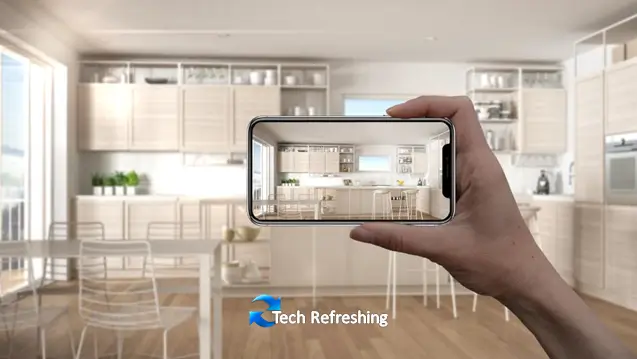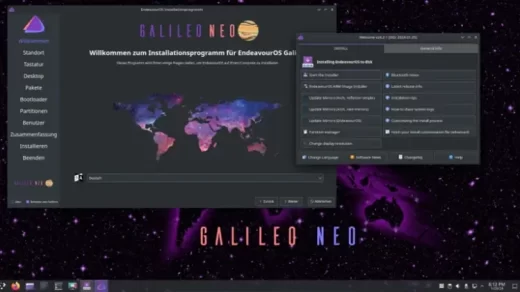Revolutionizing the Retail Experience: How the Metaverse is Transforming Shopping!
The retail industry is constantly emerging and adapting to the changing demands and preferences of customers. In an increasingly digital world, the metaverse has emerged as a powerful tool to transform the retail experience. In this blog post, I will discuss what the metaverse is and how it can be used to create an immersive and engaging retail experience. I will also provide tips and best practices for leveraging the metaverse to create a successful retail experience. So, let’s dive in and explore how the metaverse is transforming shopping!

What is the Metaverse?
The metaverse is an immersive virtual world where users can interact and engage with each other in real-time. It is a 3-dimension universe where users can explore, create, and interact with a variety of different objects, environments, and experiences. The metaverse is often referred to as a “meta layer”, as it is not limited to a single platform or technology, but rather exists across multiple platforms, technologies, and devices. It is a shared space where users can create and inhabit a shared virtual world.
The metaverse is powered by a variety of technologies, including virtual reality (VR), augmented reality (AR), and mixed reality (MR). These technologies enable users to immerse themselves in a virtual world and interact with it using a variety of devices such as headsets, controllers, and motion tracking systems. The metaverse also leverages artificial intelligence (AI) and natural language processing (NLP) to create a more realistic and engaging experience.
Benefits of the metaverse for the retail experience
The metaverse can revolutionize the retail experience by providing customers with an immersive and engaging shopping experience. By leveraging the metaverse, retailers can create a virtual store where customers can view, interact with, and purchase products in a virtual space. This allows customers to experience products in a more realistic and engaging way, making them more likely to purchase products.

The metaverse also enables retailers to provide a more personalized shopping experience. By leveraging AI and NLP, retailers can create personalized recommendations for customers based on their past purchases and browsing history. This allows customers to find the products they are looking for more quickly and easily, making for a more enjoyable shopping experience.
The metaverse can also be used to create more interactive and engaging experiences. With the metaverse, retailers can create virtual events and experiences that customers can participate in. This allows retailers to create more engaging and memorable experiences that attract customers and increase sales.
The future of the metaverse-enabled retail experience
The future of the metaverse-enabled retail experience is bright. As the technology continues to evolve, retailers will be able to leverage the metaverse to create even more immersive and engaging experiences for their customers.
Retailers will be able to leverage the metaverse to create virtual stores that are tailored to their customer’s preferences. They will be able to create personalized recommendations based on customer’s past purchases and browsing history. They will also be able to create interactive and engaging experiences for customers, such as virtual events and product demonstrations.
The metaverse will also enable retailers to create a more personalized shopping experience by leveraging AI and NLP to provide customers with personalized recommendations. This will allow customers to find the products they are looking for more quickly and easily, making for a more enjoyable shopping experience.
In the future, the metaverse will also enable retailers to provide customers with a more personalized customer service experience. By leveraging AI and NLP, retailers will be able to provide customers with more personalized customer service, such as providing personalized product recommendations or answering customer questions in real-time.
Examples of successful metaverse-enabled retail experiences
There are several examples of successful metaverse-enabled retail experiences. For example, IKEA has created an augmented reality (AR) app that allows customers to explore and interact with their products in a virtual store. Customers can explore products in a 3D environment and purchase them directly from the app.
Another example is Amazon’s virtual store. Amazon has created a virtual store that allows customers to shop for products and purchase them in a virtual environment. Customers can explore products in a 3D environment and purchase them directly from the virtual store.
Google and Apple have also created virtual stores that allow customers to explore and purchase products in a virtual environment. Google has created a virtual reality (VR) store that allows customers to explore products in a 3D environment and purchase them directly from the app. Apple has created an augmented reality (AR) store that allows customers to explore products in a 3D environment and purchase them directly from the app.

How to create a metaverse-enabled retail experience
Creating a successful metaverse-enabled retail experience requires a combination of technology, creativity, and customer insights. Here are some tips for creating a successful metaverse-enabled retail experience:
- Start with a customer-centric approach. Begin by understanding your customer’s needs and preferences and create an experience that meets those needs.
- Leverage the latest technologies. Utilize the latest technologies, such as virtual reality (VR), augmented reality (AR), and mixed reality (MR) to create an immersive and engaging experience.
- Utilize AI and NLP. Leverage artificial intelligence (AI) and natural language processing (NLP) to create personalized recommendations and provide a more personalized experience.
- Focus on user experience. Make sure the experience is intuitive and user-friendly.
- Measure and optimize. Measure the performance of the experience and optimize it based on the results.
Essential tools for creating a metaverse-enabled retail experience
Creating a successful metaverse-enabled retail experience requires a variety of tools. Here are some essential tools for creating a metaverse-enabled retail experience:
- Virtual reality (VR) headsets. VR headsets provide an immersive virtual environment for customers to explore and interact with products.
- Augmented reality (AR) apps. AR apps provide a 3D environment for customers to explore and interact with products.
- Mixed reality (MR) headsets. MR headsets provide an immersive virtual environment for customers to explore and interact with products.
- Motion tracking systems. Motion tracking systems allow customers to interact with products in a virtual environment.
- Artificial intelligence (AI) and natural language processing (NLP) tools. AI and NLP tools can be used to create personalized recommendations for customers and provide a more personalized experience.
Challenges associated with creating a metaverse-enabled retail experience
Creating a successful metaverse-enabled retail experience can be challenging. Here are some of the challenges associated with creating a metaverse-enabled retail experience:
- Cost. Creating a metaverse-enabled retail experience can be costly as it requires a significant investment in technology, such as virtual reality headsets, motion tracking systems, and AI and NLP tools.
- Complexity. Building a metaverse-enabled retail experience is complex and requires a significant amount of time and resources.
- User adoption. It can be difficult to get users to adopt a metaverse-enabled retail experience, as it requires an understanding of the technology and an investment in the necessary hardware.
- Security. Security is an important consideration when creating a metaverse-enabled retail experience, as it requires the secure storage and transmission of user data.
- Privacy. Privacy is an important consideration when creating a metaverse-enabled retail experience, as it requires the secure storage of user data and the ability to control who has access to it.
Courses for creating a metaverse-enabled retail experience
Creating a successful metaverse-enabled retail experience requires a significant amount of knowledge and expertise. Here are some courses you can take to learn more about creating a metaverse-enabled retail experience:
- Introduction to Virtual Reality. This course provides an introduction to virtual reality (VR) and how to create a VR-enabled retail experience.
- Introduction to Augmented Reality. This course provides an introduction to augmented reality (AR) and how to create an AR-enabled retail experience.
- Introduction to Mixed Reality. This course provides an introduction to mixed reality (MR) and how to create an MR-enabled retail experience.
- AI and NLP for Retail. This course provides an introduction to artificial intelligence (AI) and natural language processing (NLP) and how to use them to create a more personalized retail experience.
- User Experience Design for Retail. This course provides an introduction to user experience design and how to create an engaging and intuitive user experience.
Conclusion
The metaverse is revolutionizing the retail experience by providing customers with an immersive and engaging shopping experience. By leveraging the metaverse, retailers can create a virtual store where customers can view, interact with, and purchase products in a virtual space. The metaverse also enables retailers to provide a more personalized shopping experience by leveraging AI and NLP to provide customers with personalized recommendations.
Creating a successful metaverse-enabled retail experience requires a combination of technology, creativity, and customer insights. To create a successful metaverse-enabled retail experience, retailers should start with a customer-centric approach, leverage the latest technologies, and focus on user experience. It is also important to monitor the performance, provide feedback, and optimize the experience based on the results.
Finally, if you’re looking to create a metaverse-enabled retail experience, there are several courses available that can help you learn more about creating a successful metaverse-enabled retail experience.
The metaverse is revolutionizing the retail experience and creating a more immersive and engaging shopping experience. By leveraging the metaverse, retailers can create virtual stores, provide more personalized experiences, and create interactive and engaging experiences for customers. So, if you’re looking to revolutionize your retail experience, the metaverse is the way to go!


